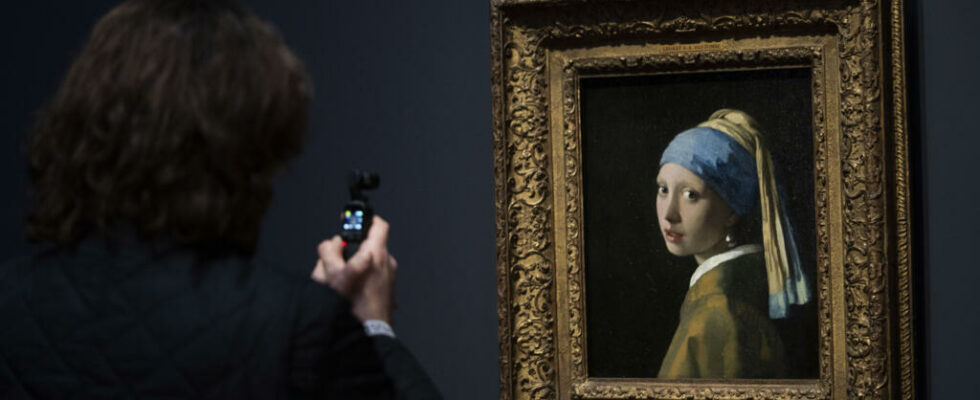What makes a painting survive the centuries and continue to fascinate contemporary visitors who rush to see it in real life? Scientists have tried to study the impact produced in our brain from one of the masterpieces of the golden age of Flemish painting The Girl with the Pearl Earring, painted by Johannes Vermeer in 1665.
2 mins
Eye sensors, electrodes around the head, but also electroencephalograms, magnetic resonance imaging (MRI)… Around ten spectators agreed to have their brain activity analyzed in front of the board. The Girl with the Pearl Earringtreasure of the Mauritshuis museum in The Hague The Netherlandssigned by the Dutch painter Johannes Vermeer. The study carried out by the research company Neurensics made it possible to measure the neurological reaction to the work of art.
The portrait of The Girl with the Pearl Earring is undeniably magnetic. It stands out against a black background. Painted from three-quarter back, she wears a yellow jacket and a white collar. Wearing a blue and yellow turban, she is adorned with a pearl in her ear. She turns her face towards us, her mouth open, as if she were going to speak. Her gaze fixes us even if she seems lost in her thoughts.
Effects observed in front of the original canvas
The composition forms a triangle. The light coming from the left, as in all the paintings of the Flemish painter Vermeer, produces shadows on the face and clothing. It also makes the pearl shine. Eye, mouth, pearl: the visitor is caught in what scientists call “a sustained attention loop”, a neurological phenomenon that forces us to be attentive.
The part of the brain that governs consciousness and personal identity (the precuneus) is also strongly stimulated. Another discovery is that photos and other reproductions of the original work do not produce this effect. The emotion felt by the spectator is then ten times less strong. An invitation to visit museums to see the works in real life and why not to carry out similar studies on other masterpieces that have stood the test of time and kept their aura of mystery like The Mona Lisa by Leonardo da Vinci.
